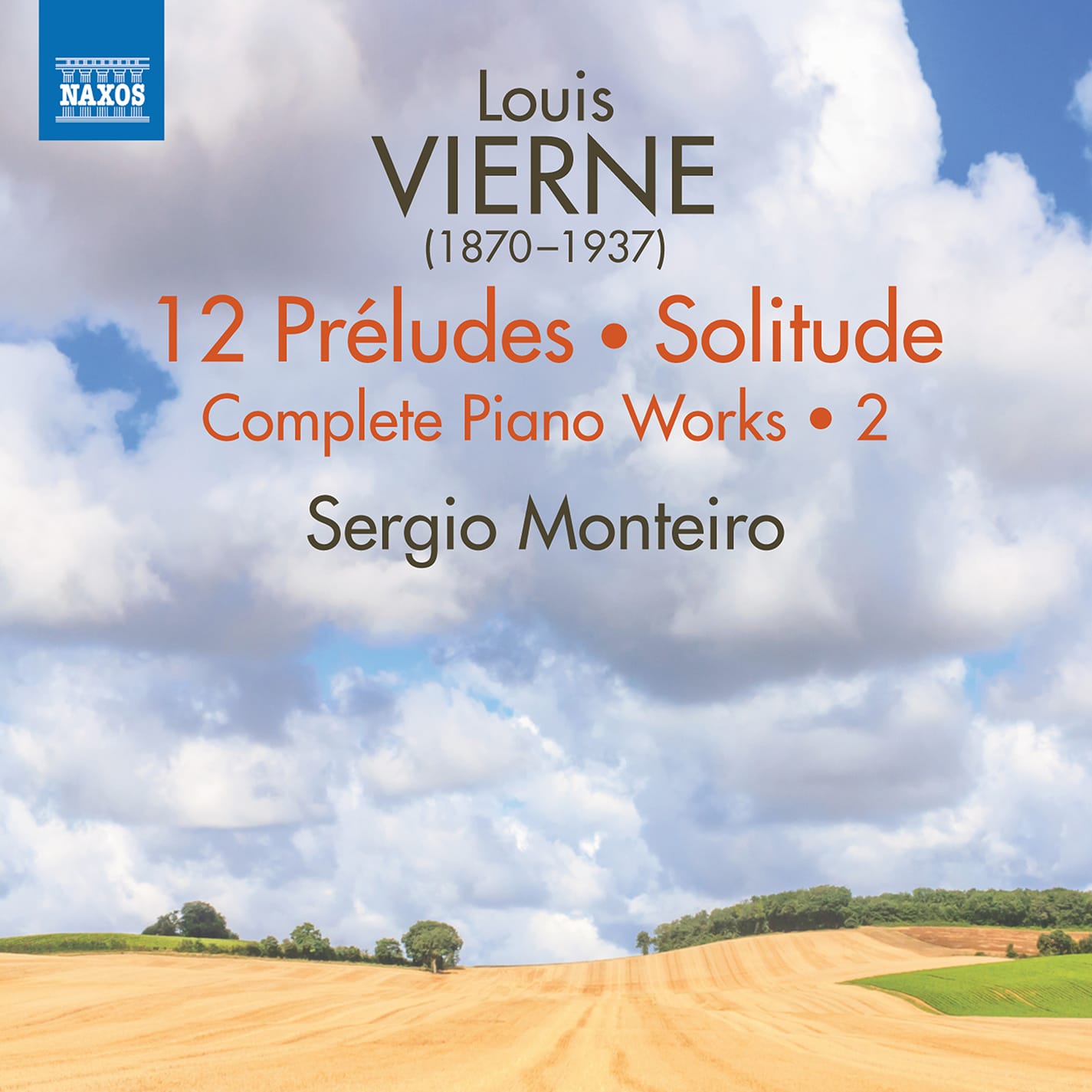Louis Vierne's piano music: revelatory performances by Sergio Monteiro
Do give this a try ...

Better remembered for his organ music, Louis Vierne (1870-1937) nevertheless penned a substantial amount of piano music. Sergio Monteiro's survey was launched by a disc that included the Suite Bourguignonne and the Poème des cloches funèbres. Here in volume 2, we begin with his set of 12 Préludes, Op. 35 (1914/15). The music is often beautiful, but also often troubled, as perhaps one can hear in the third Prélude, “Préssentement” (Foreboding):
Vierne’s sense of nostalgia is distinctly Impressiistically inspired:
… contrasting with the rather more muscular and virtuosic “Par gris temps” (In heavy weather):
The surprise comes with the opening of the eighth Prélude (the second Prélude of the second book): suddenly the music plunges into surprisingly black regions. This one is “Dans la nuit” and is marked, simply, Grave. The middle section is like the middle of the central section of Chopin's so-called “Raindrop” Prélude, but the manic version (both feature a markedly repeated note):
For me, the most advanced and most interesting of the Préludes is the penultimate, No. 11, “Adieu”. This takes on new harmonic adventures, really heartfelt music superbly delivered by Monteiro:
There is a palpable sense of desolation to “Seul ...,” the final Prélude. Monteiro's attacks of chords are perfectly together, which lints the whole ar earl sense of emotional weight. One can, perhaps, hear the deeply resonant chorales as organ-inspired. What a way to end a set of pieces that together (both books) las 38"30. It is work noting Monteiro's accuracy of playing: listen to how clearly each left-hand note is played in the anacruses around 4"30:
We had “Seul ...” (alone) as one of the Préludes; now we have Solitude, Op. 44 (1918), a four movement suite written soon after Vierne lost his brother (vaporised by a shell) and his eldest son (suicide). Naxos booklet annotator Peter Siepmann is absolutely correct to refer to the music in this set as “Gothic” .The music sings mournfully.Try “Hauntise” (Haunting), the first movement, “The memory of the departed friends haunts one who is lonely”:
Some of Vierne's most fascinating writing occurs in the third movement, “Valse hallucinate”:
I have to include the YouTube of the final movement, “La Ronde fantasque des revenants” (A Ghostly Round Dance) if only to give you a chance to see the film that goes with it. Inserted in the YouTube sequence by Naxos Japan, it is perhaps not what one might expect but fascinating nonetheless. In fairness, there are moments in Vierne’s piece that could be used as teh accompaniment to an early silent film:
Ever wondered what “Also sprach Zarathustra” is in French? Should this be so (I doubt it), Vierne provides the answer: his next piece is Ainsi parlait Zarathustra, Op. 49 (1922), also simply titled Pièce pour Piano. It was not published until Bärenreiter issued it in 2008. Vierne's take is certainly not as momentous as Richard Strauss', but it certainly is varied and dramatic, and Monteiro is there for it:
Finally, an Air à danser of 1910 and a couple of the Airs de danse (1911/12, an incomplete set). They are the perfect way to end, culminating in the spiky, sprightly “Les Esprits de la nuit” (a PG version of Op. 44/4, perhaps, and performed with brilliant crispness by Monteiro). Here's the Air à danser:
There is strong competition from Mūza Rubackytė on Brilliant Classics, who also couples the Préludes with Solitude, but adds a lovely piece, the Nocturne, Op. 53/3, a piece that sings of nocturnal nightingales and makes a nice postscriptum to this post:
Here's the Amazon link for Monteiro's Volume 2 and the (slightly cheaper) Volume 1. Streaming links below:


